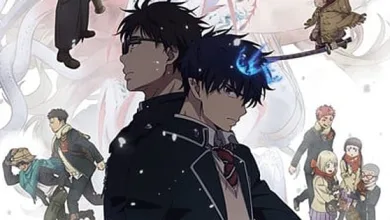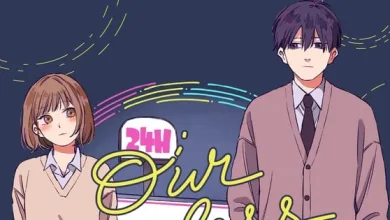Go! Princess Precure Episodes 1-25 Anime Series Review – Review

While all Pretty Cure series are tailored towards an audience of little girls, Go! Princess Pretty Cure is the one (of those legally available in English) that leans into that the most. With its themes of princesses and dreams and its double-layered transformations, it leans hard into ideas about what little girls are supposed to want. Fortunately, as with all good examples of children’s media, that doesn’t mean this isn’t enjoyable to any audience who can appreciate a story about finding what makes you happy and working towards your dreams.
Our main heroine this time is Haruka Haruno, a first-year middle school student. As a little girl, Haruka was obsessed with and inspired by a picture book about a flower princess, and her love for the character only increased when she met a mysterious boy named Kanata. Kanata gave her a “special charm,” a pink princess gown-shaped trinket, which Haruka has held on to ever since. When she enrolls in Noble Academy, a prestigious boarding school with a serious Class S vibe despite being coed, Haruka learns that Kanata’s gift was actually something called a “dress up key,” which, when paired with a special perfume bottle, gives Haruka the power to transform into Cure Flora, one of the legendary Princess Pretty Cures. Flora eventually is joined by Cure Mermaid, Cure Twinkle, and Cure Scarlet, and together they fight Dyspear, the Witch of Despair, and her evil minions, who are attempting to use the dreams of Earth people to solidify their control over Kanata’s homeland, Hope Kingdom. In setup, it feels vaguely like Tropical-Rouge! Pretty Cure, but despite being a lighter season (thus far), it still has a more serious air than its descendant.
It also shares a similarity with Delicious Party Pretty Cure in that its main heroine is the least interesting of the bunch. That’s not to say that Haruka is a bad character; far from it. Haruka is an unrelenting ball of sunshine, her determination tempered by a sweet innocence that her companions lack. She perfectly embodies a picture book princess, and her keen determination to become the best princess allows the show to explore the idea that princesses need to be more than just pretty girls in frilly dresses. Haruka learns ballet, violin, etiquette, and a variety of other skills. However, the fact remains that the stakes are lower for her than for the rest of the team, and she feels like a much less developed character.
Despite that, the first half of this series is good, with things improving by the second cour. The start is mostly concerned with introducing the villains and the pink, blue, and yellow Cures. Alongside Haruka are Minami and Kirara and the inevitable animal-like fairies, Puff and Aroma. Kirara is the most interesting of this set; her goal is to become a top model like her mother, and she’s already well on her way there. She’s so devoted to her dream that she initially refuses to fight as Cure Twinkle – she cheerily says that she’s way too busy trying to balance school and modeling. While this throws Haruka and Minami for a loop, the eventual resolution is more important than Kirara’s initial refusal: she ultimately decides to join because Haruka sees her for herself rather than as “Kirara the Model.” For Kirara to become Cure Twinkle, she must embrace her multifaceted self: she can be a student, a daughter, a model, and a superhero all at once. There’s no need to limit what she can do, and while she often comes across as a bit frivolous, her determination is probably stronger than any of her companions. Haruka, Minami, and later Towa all want one thing; Kirara wants it all.
This determination and intensity help to balance out Towa, Cure Scarlet. Towa begins the story as Twilight, the purported daughter of Dyspear, and her eventual reclamation of her goodness leaves her with an intense feeling of insecurity and trauma. As Twilight, Towa did an astounding amount of damage to people in both realms, and she remembers all of that once she comes back to herself. This means that she is coping with guilt as well as her new position as a Cure, and she’s never fully convinced of her welcome in the group. Kirara is the one best able to reach her, doing for Towa what Haruka did for her: seeing her as a whole person and not just as a role she played. Although all three girls try to help Towa, Kirara seems to understand best what she’s going through. This may go back to Kirara’s relationship with her internationally famous top model mother; although we don’t see much of her in this half of the series, she seems to leave Kirara on her own a lot and gives the impression of being a difficult mother to have, acting more like a friend than a parent. Meanwhile, as Twilight, Towa was brainwashed into believing that Dyspear was her mother, which contributed to her trauma and painful memories. Although Towa struggles to find her equilibrium when episode twenty-five ends, her friendship with Kirara is helping.
From a magical girl genre perspective, Go! Princess Pretty Cure has some fascinating elements. The girls all have several transformations, which feels like testing out the multiple distinct outfits that the Witchy Pretty Cure! girls would get in the following season, but more historically feels like a nod to Wedding Peach. In Wedding Peach, the Love Angels all begin in their fluffy wedding dresses before changing to more battle-oriented costumes with a “wedding change” transition, while in Go! Princess, the Cures begin in the battle gear and change to the princess dresses through their “elegant” shift. Each Cure has three specific elegant looks based on which dress-up key she uses, but the bases of their outfits are the same, with different embellishments. Alongside being essentially a reverse-Wedding Peach, Cure Flora’s gowns look very similar to Wedding Peach‘s wedding dress, with her lily gown sharing some distinct similarities to Angel Lily’s. Cure Scarlet’s name also feels a bit like it might be a tribute to Angel Salvia’s human name, Scarlet because, by any measure, Cure Phoenix would have made more sense for the character, who rises from the ashes of her trauma to become a hero. (She has a phoenix key, but that feels too little, too late.) The Cures also all have their own palaces in Hope Kingdom, similar to the Guardians in Sailor Moon, while the idea of them all being princesses also plays into later volumes of that series. (When this series came out, Pretty Guardian Sailor Moon Crystal hadn’t reached that point in the story, and the classic Sailor Moon anime didn’t cover the princess aspects of Naoko Takeuchi‘s manga.)
Fight scenes in this series are some of the best I’ve seen in a Pretty Cure show, with real effort made to ensure that the Cures are graceful as well as powerful. Cure Scarlet’s clunky plastic violin is perhaps a bit too obviously designed to be marketed, but everyone’s attacks are impressive, and they regularly shift between keys to keep things interesting. It’s also worth noting that this is one of the funnier seasons as well; it repeatedly uses humor to good effect, with a zetsuborg (the season’s monster) talking over his creator in episode nine and Twinkle’s dress-up key fading from the title card when she refuses her role. The character designs feel a bit weaker, with Haruka/Cure Flora’s hair, a bun attempting to mimic a crown, just looking awkward, and Dyspear feeling a bit like a Sister Jill (Cutie Honey) knock-off.
By the time this set of episodes ends, the stakes have been raised significantly. Towa’s addition to the cast shows just how terrible Dyspear and her minions can be and what the Cures are truly up against. The inclusion of Yui, a non-transforming friend who knows the girls’ secret (a forerunner to Wonderful Pretty Cure‘s Satoru), helps to remind them what could happen if they fail to stop the villains, as does their brief sojourn to Hope Kingdom. The result is that these episodes feel deceptively light, like the real battle is looming on the horizon, and the Cures are only starting to realize it.
Source link
#Princess #Precure #Episodes #Anime #Series #Review #Review



